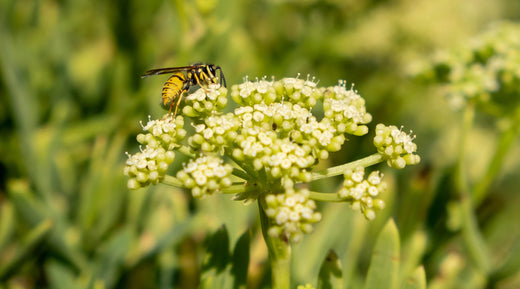In the past 10 years with the rise of Green Beauty and then Clean Beauty, a wave of concern has swept through the public consciousness regarding the safety of cosmetics. From viral social media posts to alarmist headlines, there is a pervasive narrative suggesting that the beauty products we use daily are laden with "toxic" and dangerous ingredients. However, this notion often stems from misinformation and a misunderstanding of cosmetic chemistry. Let's delve into why these fears are largely unfounded, particularly in the context of stringent regulatory frameworks like the recent Modernization of Cosmetics Regulation Act (MoCRA) and comprehensive safety testing protocols.
Rigorous Regulation and Safety Standards
Despite the misinformation, the cosmetics industry is one of the most heavily regulated sectors, with stringent oversight to ensure consumer safety. In the United States, the Food and Drug Administration (FDA) plays a pivotal role in monitoring cosmetic products. It isn't the big boys you need to worry about it. It is those making their own products at home that do not follow regulations or are ignorant of them. That is where the concern should be. Being ignorant is no excuse.
MoCRA's provisions are especially relevant to the color cosmetics sector, which includes products like lipsticks, eyeshadows, and blushes. These products are subject to even stricter regulations due to the potential risks associated with color additives. Unlike other cosmetic ingredients, color additives must be specifically approved by the FDA for their intended use. This includes a rigorous evaluation process to ensure they do not pose any health risks. The FDA maintains an extensive list of approved color additives and enforces strict labeling requirements, ensuring that consumers are informed about the contents of these products.
MoCRA mandates that companies register their products and facilities, disclose all ingredients, and report adverse events. This law enhances transparency and accountability, ensuring that consumers are well-informed about what they are applying to their skin. It also requires companies to substantiate the safety of their products, proving that ingredients are not harmful under intended use conditions. This level of scrutiny is designed to protect consumers and prevent the circulation of potentially hazardous products.

Safety Testing and Monitoring
Before reaching the market, cosmetic ingredients undergo extensive testing for safety. This includes assessing potential risks such as skin irritation, allergic reactions, and toxicity. These tests are performed by qualified toxicologists who adhere to internationally recognized safety standards. Moreover, post-market surveillance allows regulatory bodies and companies to monitor any adverse health impacts reported by consumers. If a product or ingredient is found to cause harm, it can be swiftly recalled or reformulated.
Additionally, the environmental impact of cosmetic ingredients is a significant consideration. A prime example of this is the global movement to ban microplastics. Microplastics, often used in exfoliating products, have been criticized for their detrimental impact on marine life. In response, many countries, including the United States and members of the European Union, have introduced legislation to phase out these particles, demonstrating a proactive approach to environmental stewardship.

Microplastics where banned due their environmental impact.
Understanding Cosmetic Chemistry
The demonization of cosmetics often arises from a lack of understanding of cosmetic chemistry. The term "chemical" frequently carries a negative connotation, yet everything around us—including water and air—is composed of chemicals. The key distinction lies in concentration and usage. Cosmetic ingredients, including preservatives, fragrances, and colorants, are formulated in precise amounts to be safe and effective.
For instance, parabens have been widely used as preservatives to prevent microbial growth in products. Despite concerns about their potential hormonal effects, comprehensive reviews by scientific bodies have deemed them safe at the levels used in cosmetics. The same applies to other ingredients like phthalates and formaldehyde releasers, which are carefully regulated and used in minimal, non-hazardous concentrations. Their removal from cosmetics has been because consumers refuse to use a product with them in, however the challenge in finding an equivalent that does not irritate is difficult for many manufacturers.
The Misguided Fear of Cosmetics
The fear-mongering around cosmetics often fails to acknowledge the rigorous regulatory processes and scientific expertise involved in the industry. Many of the alarming claims lack context or are based on studies that do not reflect real-world use conditions. For example, a study might find that a certain ingredient is harmful at extremely high doses, but the amounts used in cosmetics are far below any dangerous threshold.
Critics of the cosmetics industry may not fully grasp the complexities of ingredient safety assessment and the protective measures in place. This misunderstanding can lead to unfounded fears and the spread of misinformation. While it is always prudent to be cautious and informed about the products we use, it's equally important to trust the science and regulatory bodies that work tirelessly to ensure our safety.
Conclusion
The narrative that cosmetics are filled with toxic ingredients is a form of scaremongering that lacks a scientific basis. With robust regulations like MoCRA, comprehensive safety testing, and vigilant monitoring, the cosmetics industry prioritizes consumer safety and environmental responsibility. Understanding the basics of cosmetic chemistry and the stringent regulatory framework can help dispel the myths and alleviate unnecessary fears. The next time you reach for your favorite lotion or lipstick, you can do so with confidence, knowing that it has passed rigorous safety checks designed to protect your health and well-being.
Read more
When it comes to skincare, there are countless ingredients and products to choose from. But one ingredient you should be paying attention to is Lactic acid. Lactic acid is a type of alpha hydroxy...

The Pink Crithmum Maritimum, also known as sea fennel, is a remarkable plant that offers numerous benefits for your skin. Derived from the Mediterranean coastal regions, this flowering succulent ...



